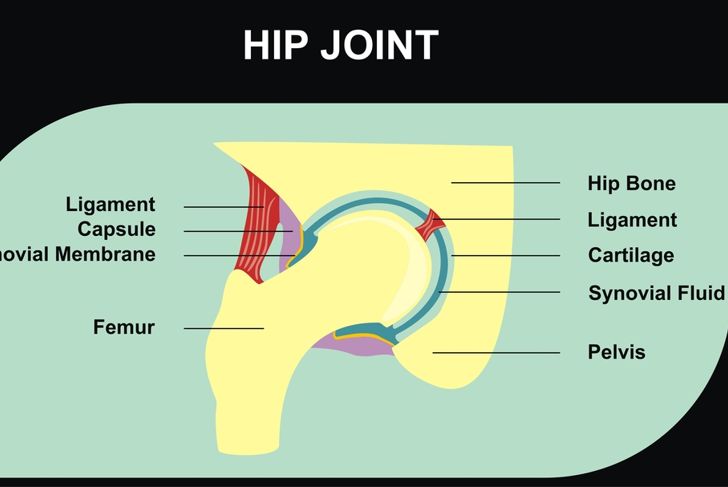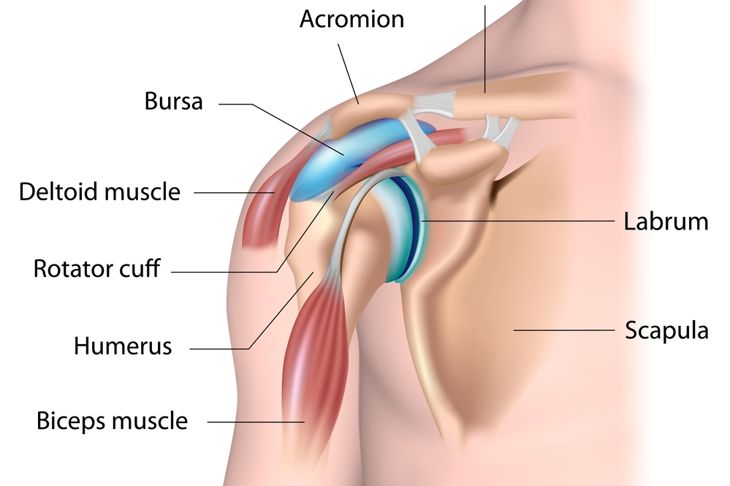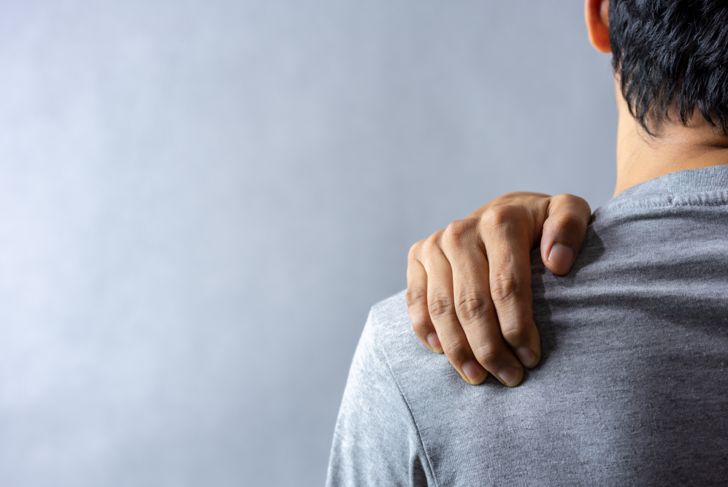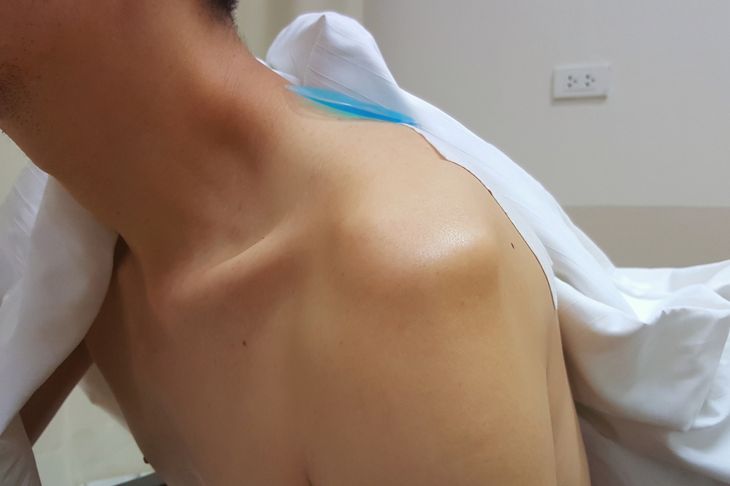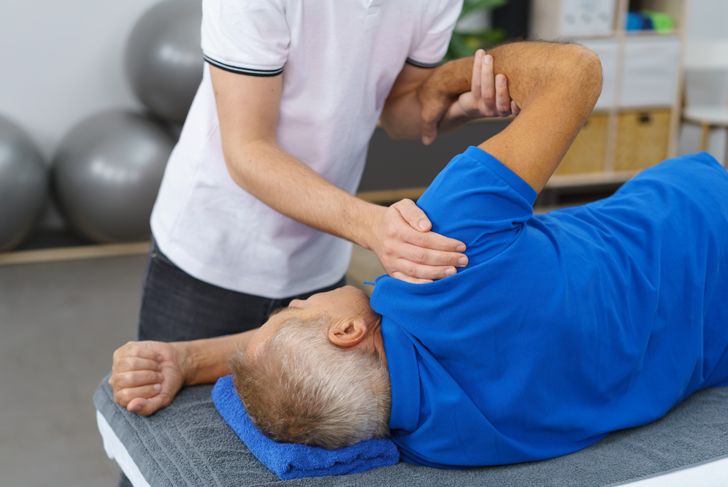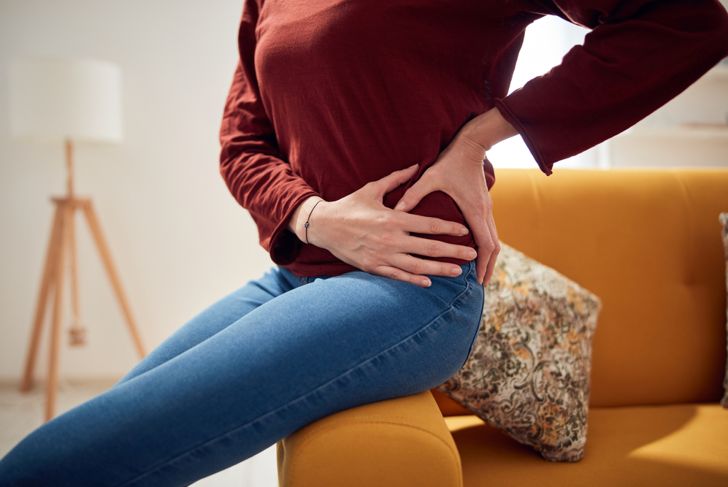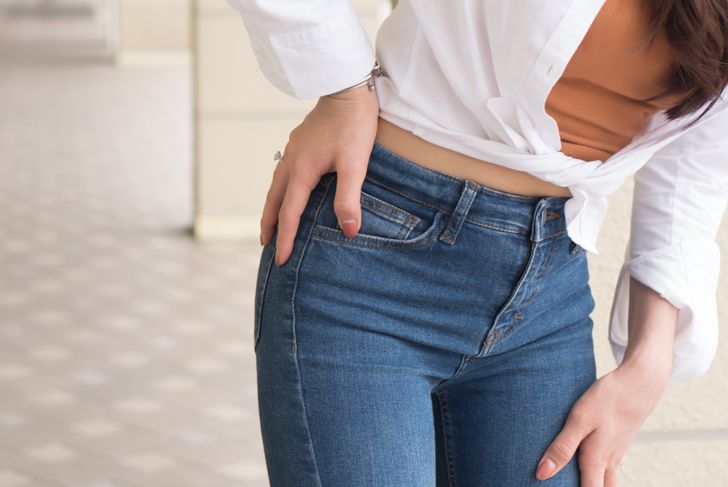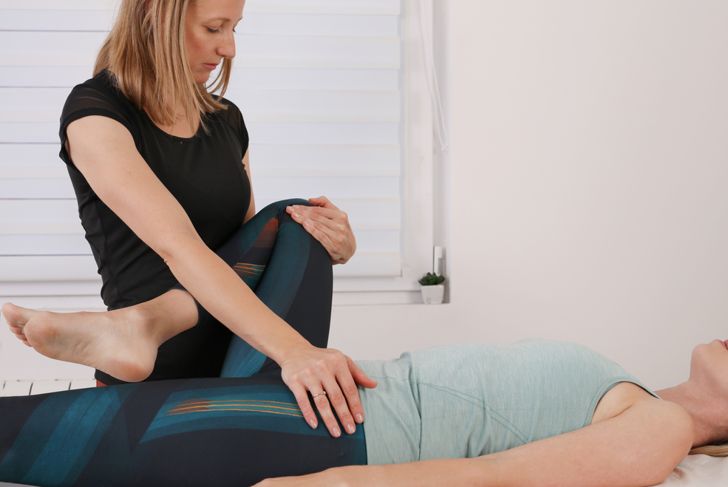The labrum is specialized cartilage present in ball and socket joints, including the shoulder and hip. This cartilage sits along the rim of the socket, helping to support and stabilize the joint, and if it rips, this is called a labrum tear. Many things can cause this injury, and the symptoms and treatment vary depending on the severity.
Rigid Cartilage
There are two types of cartilage in joints. Articular cartilage is smooth and rubbery; it helps the bones slide and move against one another comfortably. Labrum cartilage is more rigid and fibrous. It is located only around the socket of the joint, not at the ends of the bones.
Function of the Labrum
The labrum has two main functions. First, it forms a bumper around the socket, deepening the joint and helping the ball stay in place. The labrum also acts as an attachment point for ligaments that help hold the joint together. Labrum tears can occur in shoulder and hip joints, both of which have a ball and socket structure.
SLAP Tears
One type of shoulder labrum tear is a SLAP injury, which stands for superior labrum anterior and posterior. The tear occurs at the top of the labrum, in front and behind the point where the biceps tendon attaches. SLAP injuries result from automobile accidents, falls, and forceful movements above shoulder level. Repeated shoulder motion is a common cause of SLAP injuries, and many occur in people over 30 who are beginning to experience wear and tear in the cartilage as a part of normal aging.
Bankart Tears
Another type of shoulder labrum tear is a Bankart tear. This type is more common in younger people who have a history of a dislocated shoulder. When the joint slips out of place, it can damage the lower part of the labrum, leading to a tear or ongoing shoulder instability.
Symptoms of Shoulder Labrum Tear
Most shoulder injuries, including a labrum tear, have similar symptoms. These include reduced shoulder strength, a decreased range of motion, and popping, grinding, or locking in the joint. Pain is common and can happen when holding the shoulder in certain positions or when lifting overhead. People with a labrum tear may also constantly feel like their shoulder will pop out of the joint.
Hip Labrum Tear
Hip labral tears occur for a few reasons, including joint abnormalities that speed up the wear and tear of the cartilage. They can also result from trauma, like an automobile accident or injuries sustained from playing contact sports. Athletes at particular risk for hip labral tears include ballet dancers, soccer players, and golfers.
Symptoms of a Hip Labrum Tear
Symptoms of a hip labrum tear include a clicking sound when moving the hip and unsteadiness when walking or standing. Pain can develop in the buttocks, groin, or hip, and it may get worse as you move the joint, whether the person is increasing activity or simply bending, moving, or repositioning the joint. A hip labrum tear may also have no symptoms at all.
Diagnosis
Diagnosis depends on where the tear occurred. A physical exam is often not enough to diagnose a labrum tear in the shoulder because the cartilage is so deep. An MRI or CT-arthrogram, a scan involving dye injected into the shoulder, is more accurate. The most reliable way to diagnose a shoulder labral tear is with arthroscopy, a surgical procedure where an endoscope is inserted into the joint, but this requires anesthesia, which has risks.A hip labrum tear can be more reliably diagnosed through a physical exam, though x-rays and MRI can confirm the diagnosis.
Treatment
Treatment depends on the location and severity of the labrum tear, but the injury will not heal on its own.In the shoulder, treatment may require reattaching the labrum to the socket or repairing the tear. A labrum tear in the hip may require surgical reconstruction or repair. Non-surgical treatments for any labrum tear include anti-inflammatory medications, steroid injections, and physical therapy.
Recovery
Recovery from a labrum tear depends on many things, including the location and severity, and the quality of the repair. Generally, it takes at least four weeks for the labrum to reattach itself and then another month or so to strengthen the joint. It is easy to reinjure the labrum after surgery, so building strength back slowly is essential. Complete recovery is possible, but it can take as long as four to six months.

 Home
Home Health
Health Diet & Nutrition
Diet & Nutrition Living Well
Living Well More
More